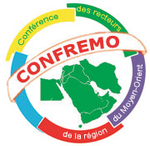Energy Saving Potential with a Double-Skin Roof Ventilated by Natural Convection in Djibouti
Résumé
In the Sub-Saharan African countries like Djibouti, the energy situation, the high rate of urban areas growth and the inadequate techniques of construction offer an exciting potential for the bioclimatic approach and sustainable construction. However, this poorly explored potential requires an investigation of different construction types in Djibouti and a good knowledge of the behavior of buildings components. Further a low energy building can be obtained because of the good realization of all its components. In fact, roofs call for attention as they represent a large part of a building's total surface area and amount of absorbed solar radiation. The goal of this paper is to investigate the benefit of using double skin-ventilated roofs for reducing cooling load under the Djiboutian climate. It is a first step towards ideas that will transform local construction practices to make them effective in energy, economic and functional dimensions. During investigation, we compared a ventilated roof assembly with traditional configuration after that the consistency of our model was validated with experiment of the literature findings. The computational fluid dynamics (CFD) model has been used for the characterization of the airflow and heat transfer phenomena in the ventilation cavity and provide fundamental information about the thermal performance of the roof. The results show the amount of the energy saving obtainable by the double-skin ventilated roof.
| Origine | Fichiers éditeurs autorisés sur une archive ouverte |
|---|
Loading...
